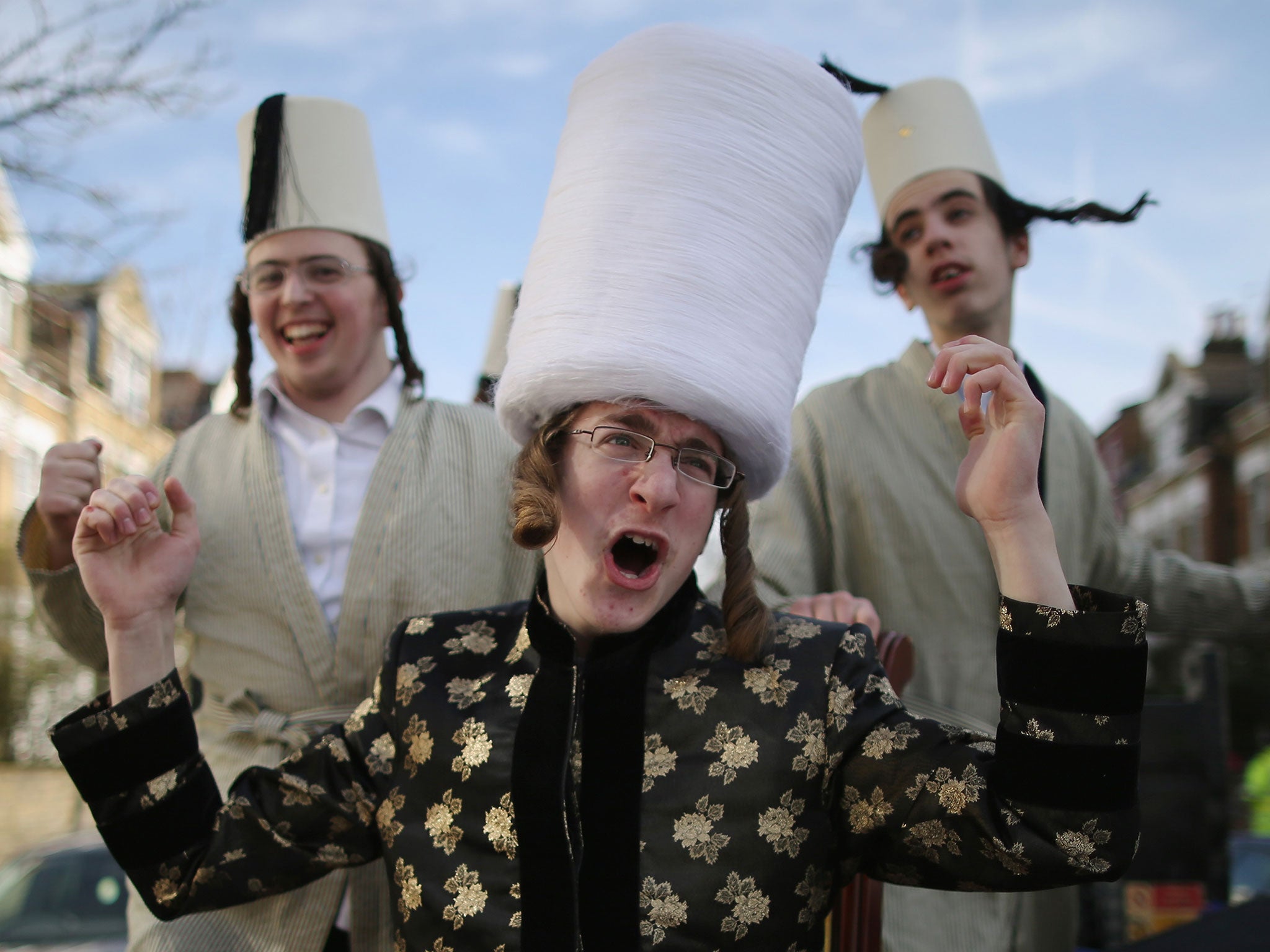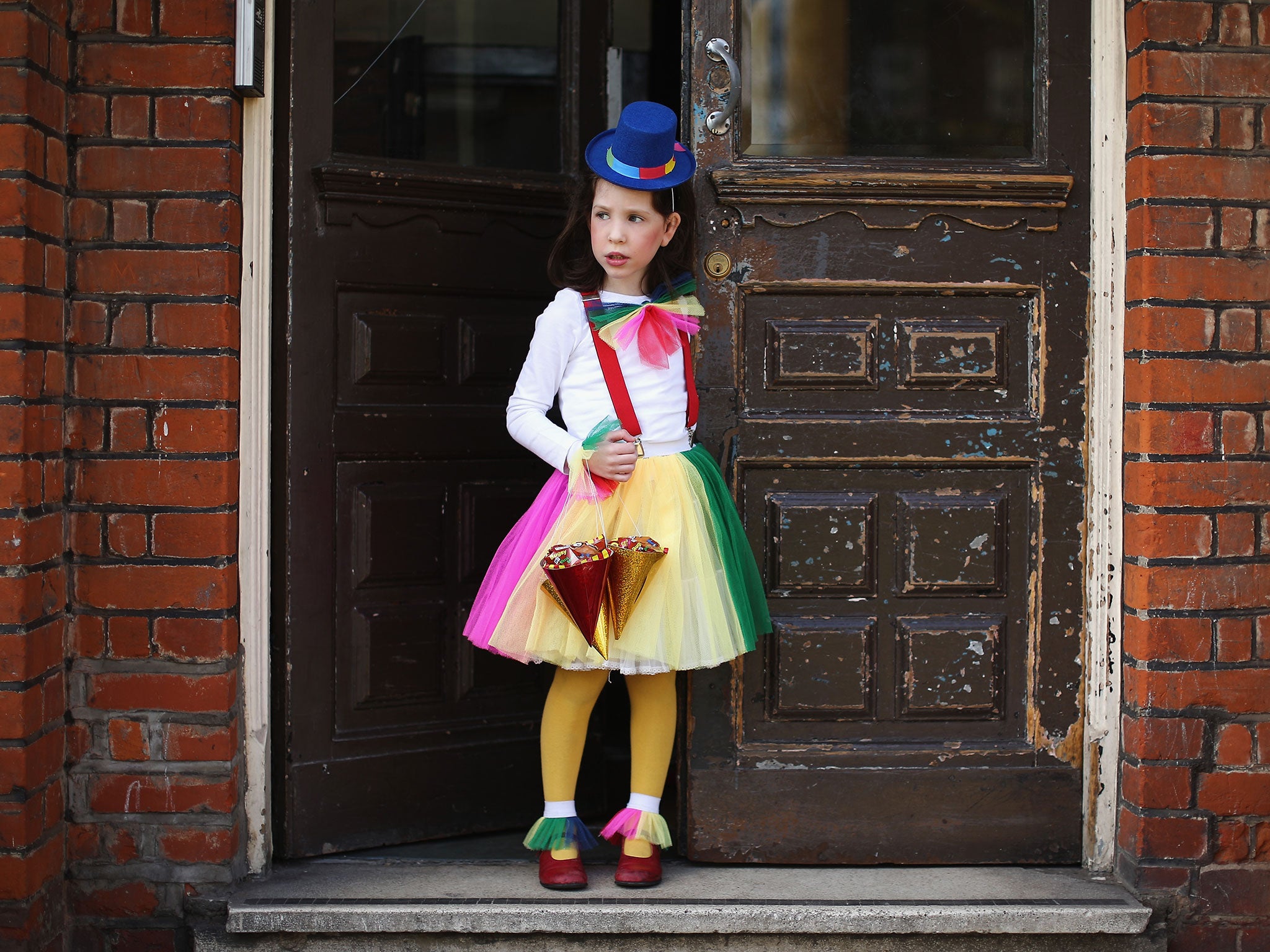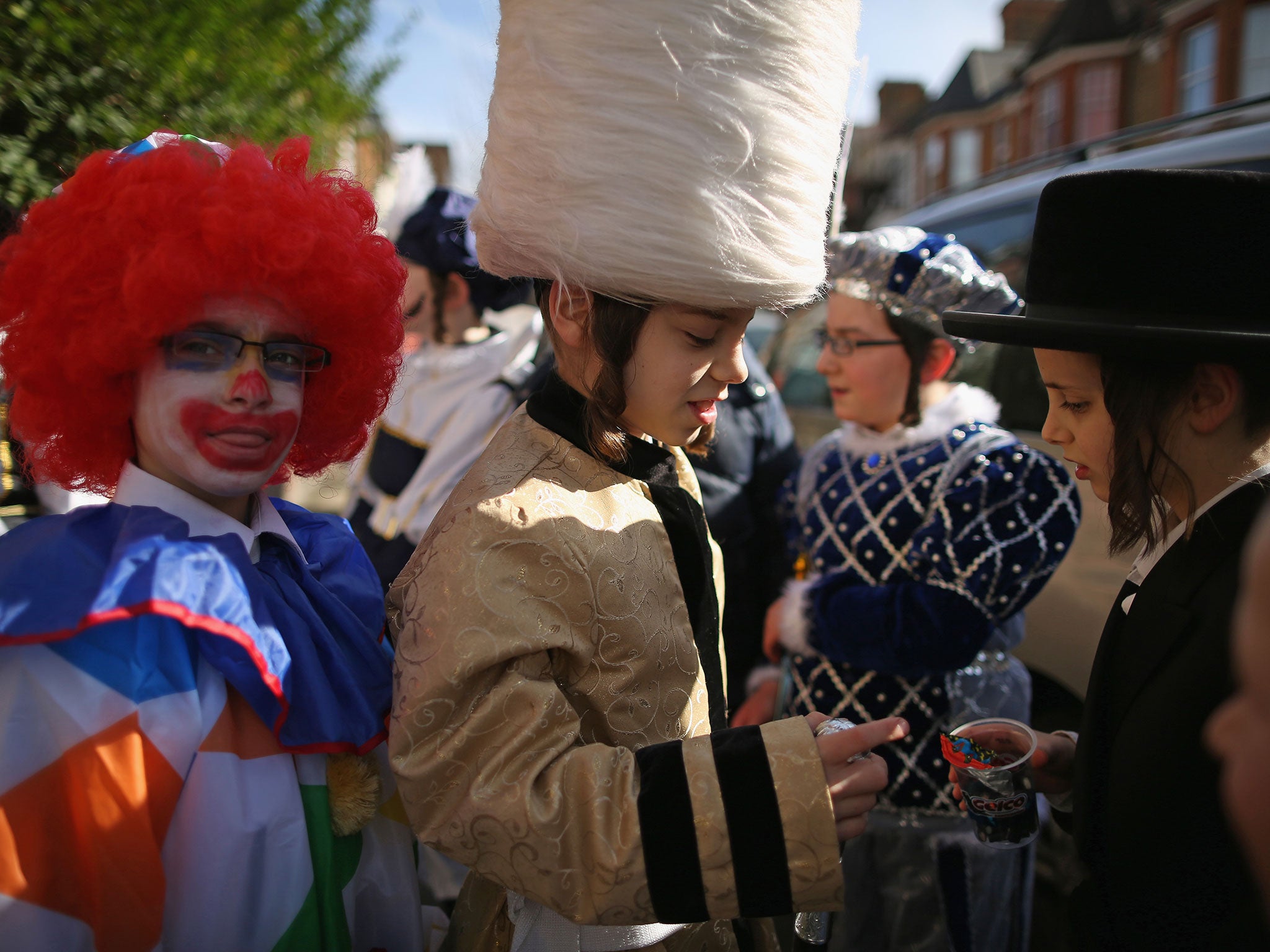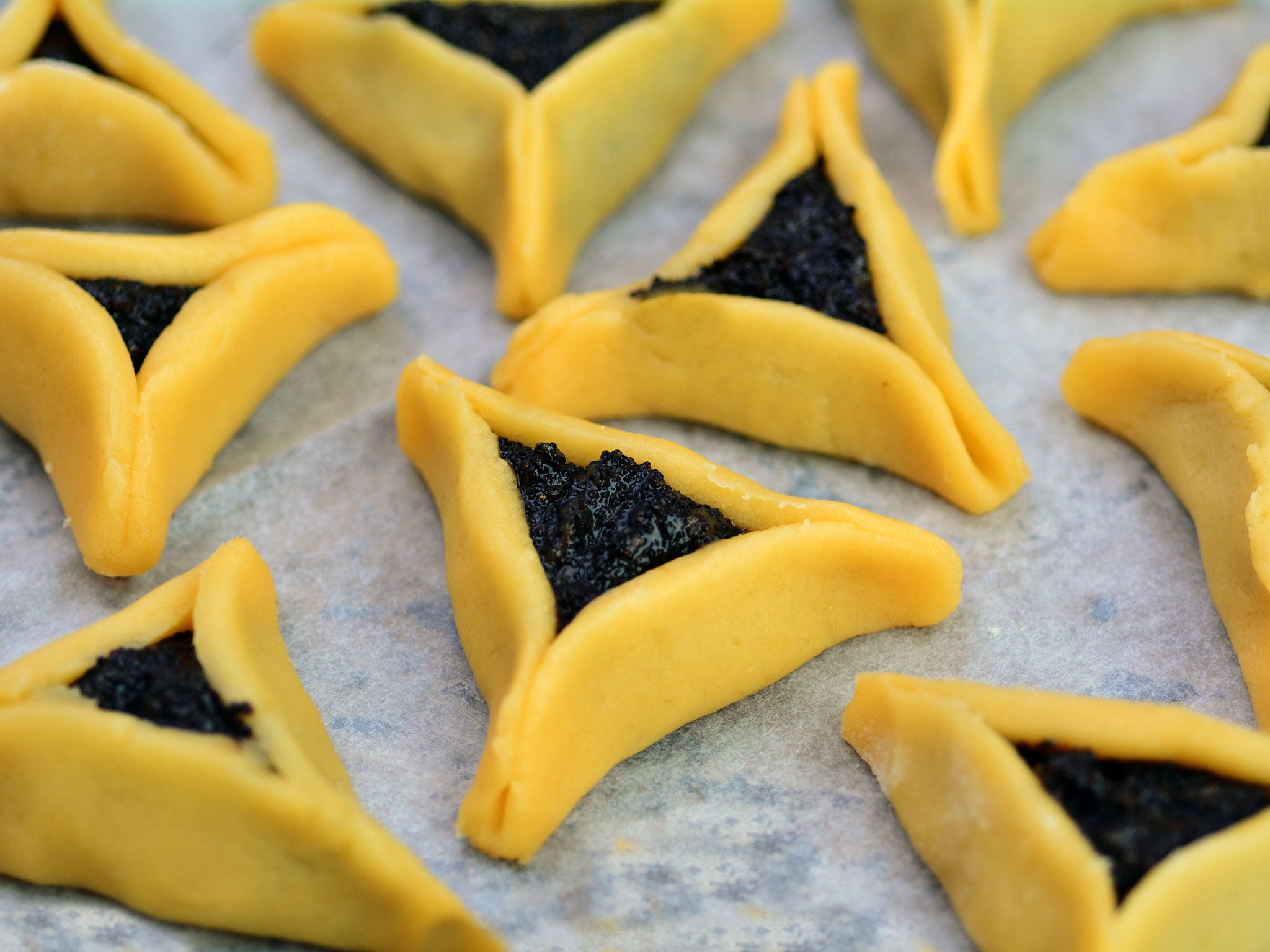Purim festival 2015: Five things you didn't know about the Jewish holiday
It's known as the Jewish Mardis Gras

Jewish people across the world are gathering today to mark the end of Purim, which celebrates an attempt by an ancient Persian King to wipe out the Jewish population 2,500 years ago.
Here are five things you may not have known about the colourful festival.
It celebrates the bravery of a young woman called Esther
The story follows Esther, who was chosen to be the wife and Queen of King Ahasuerus (believed to be Xerxes I) of Persia.
When the King’s adviser, Haman, persuades him to kill all the Jews in the empire, Queen Esther’s cousin and adopted father, Mordecai, calls on her to use her influence to stop the bloody plan.
The tale is told in the Book of Esther, known as the Megillah, and ends with Haman’s hanging and the Jewish people being saved.
Purim is celebrated on the 14th and 15th days of Adar, the twelfth month of the Jewish Calendar which usually coincides with March.

Making a racket at the synagogue is encouraged
As part of celebrations, Jewish people gather at the synagogue where the story of Esther is recited and the atmosphere is rowdy.
While it is read, listeners are encouraged to use noisemakers called graggers and to boo, hiss and stamp their feet when Haman’s name is mentioned in an attempt to drown it out.
Some congregations also shout “Long live Mordecai, cursed be Haman, blessed be Esther” or “May the name of the wicked rot!”


It’s known as Jewish Mardi Gras
Purim has a carnival-like atmosphere, with people either wearing their best Sabbath clothing or fancy dress – with King Xerxes, Vashti, Queen Esther, Mordecai and Haman among the most popular costumes.
Rabbi Gadi Levy, director of adult education at Portland Kollel in the US state of Oregon, told the Oregonian newspaper that the costumes symbolise how God is hidden in all our lives.
“Throughout the year we wear a mask,“ Levy said.
"Our facial expressions cover who we really are, our society covers who we really are. On Purim we're trying to break that. You put on the mask and the inner self is able to explode,” he explained.
Observers also perform plays and parodies of Esther’s story, hold costume contests, and give money to the poor.

Purim means…
The term itself refers to the lottery system that Haman used to decide that the massacre would be on, which fell on the 14th day of Adar.
On a leap year, when there are two months of Adar, Purim is celebrated in the second month of Adar, so it always falls one month before Passover.

Food eaten
On the eve of Purim, Jews do not eat or drink from dawn until dusk to remember Esther’s three-day fast in preparation to meet the King.
However, during the festival friends give each other foods and a feast known as the Purim se’udah is held. Adults are obliged to drink until they do not “know the difference between 'cursed be Haman' and 'blessed be Mordechai’”.
While there is no set main meal, triangular biscuits called hamantaschen – which translated to Haman’s pockets - filled with fruit marmalade or poppy seeds are served to observers.
In Israel, Purim baskets containing an assortment of sweets, cookies, bagels, wine, nuts and fruit are sold.
Join our commenting forum
Join thought-provoking conversations, follow other Independent readers and see their replies
Comments